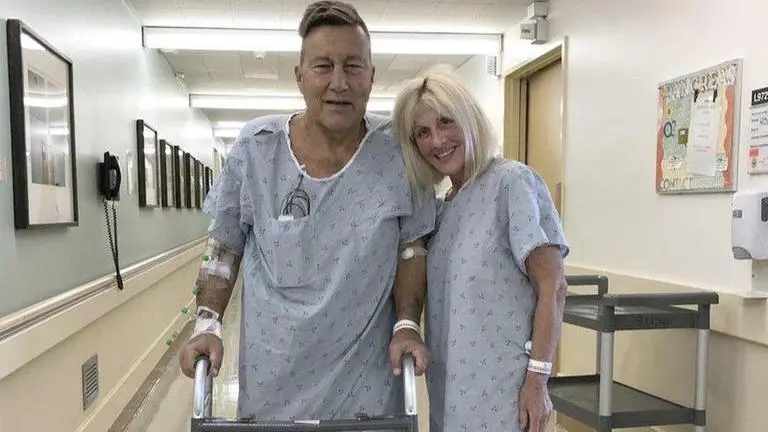Updated 12 May 2020 at 11:25 IST
Organ transplants in US, France dive due to virus
Organ transplants plummeted in the U.S. and France as COVID-19 marched through, with surgeons wary of endangering living donors or unable to retrieve possibly usable organs from the dead -- and hospitals sometimes too full even when they could.
- World News
- 3 min read

Organ transplants plummeted in the U.S. and France as COVID-19 marched through, with surgeons wary of endangering living donors or unable to retrieve possibly usable organs from the dead -- and hospitals sometimes too full even when they could.
From the end of February into early April, deceased donor transplants -- the most common kind -- dropped by half in the U.S. and by a staggering 91% in France, a team of U.S. and French researchers reported Monday in The Lancet.
66 year-old Herb Hoeptner was lucky to get a kidney from his wife in March, during the COVID-19 outbreak.
"The kidney issue was a life or death thing, more so the virus, but where it became abundantly tricky was when they explained to me that they were canceling all kinds of surgeries," said Hoeptner.
Advertisement
Living donations nearly disappeared, according to data from the United Network for Organ Sharing, or UNOS, which runs the U.S. transplant system.
The week of March 8, there were 151 living donor transplants in the U.S. The week of April 5, there were 16.
Advertisement
"They're still essential transplants for the recipient and central surgery for the recipient. But none of us really wanted to put the living donors who are healthy people doing this for altruistic reasons in any increased risk," said Dr. Kim Olthoff, Chief of Transplant Surgery at Penn Medicine.
It's too soon to know how many people waiting for a lifesaving organ transplant may die not from COVID-19 but because the pandemic delayed or blocked their chance at getting a new organ in time.
The new analysis shows vast majority of missed transplants were among people who need a new kidney and can get dialysis while they wait, but heart, lung and liver transplants declined, too.
By late April, U.S. data shows transplants slowly inching back, as hospitals struggle to determine how to safely ramp up -- and geographic variation could offer important lessons.
"In May, things have started to suggest that maybe we've seen the bottom and the number of transplants have started inch up a little bit, although certainly that's true.
I think for a living donor transplants in the most recent data, that's a little less clear about deceased donor transplants at this point," said Dr. David Klassen, Chief Medical Officer of the United Network for Organ Sharing (UNOS).
The Lancet researchers found a drop in transplants even in parts of each country where COVID-19 counts were low. But France's larger drop may be due to more centralized public health policies than in the U.S., where restrictions vary widely from state to state.
In an average month, New York does about 220 transplants statewide. In the first weeks of April, that had dropped to 23.
In contrast, the University of California, San Francisco, in an area with less COVID-19 spread, has seen much smaller dips in transplants than many Northeast hospitals.
__
The Associated Press Health & Science Department receives support from the Howard Hughes Medical Institute's Department of Science Education. The AP is solely responsible for all content.
Published By : Associated Press Television News
Published On: 12 May 2020 at 11:25 IST
